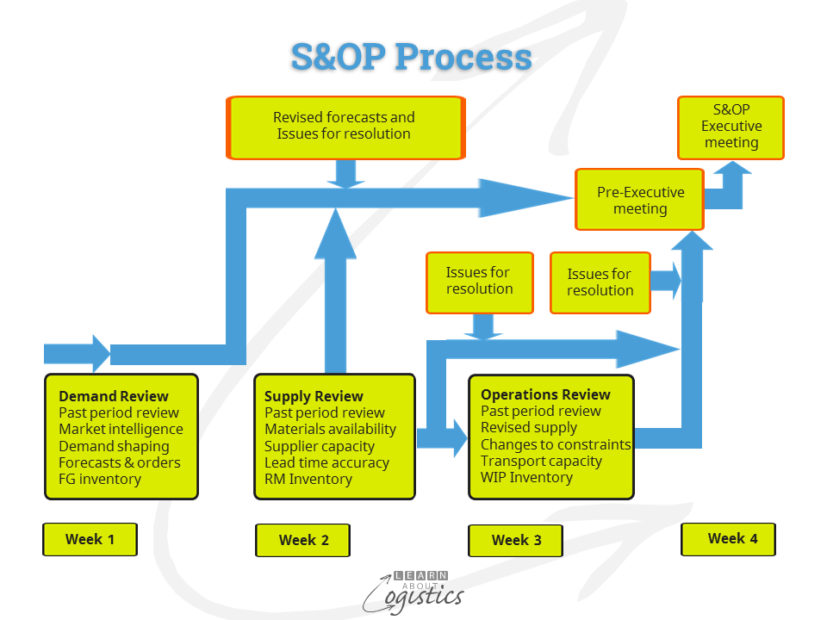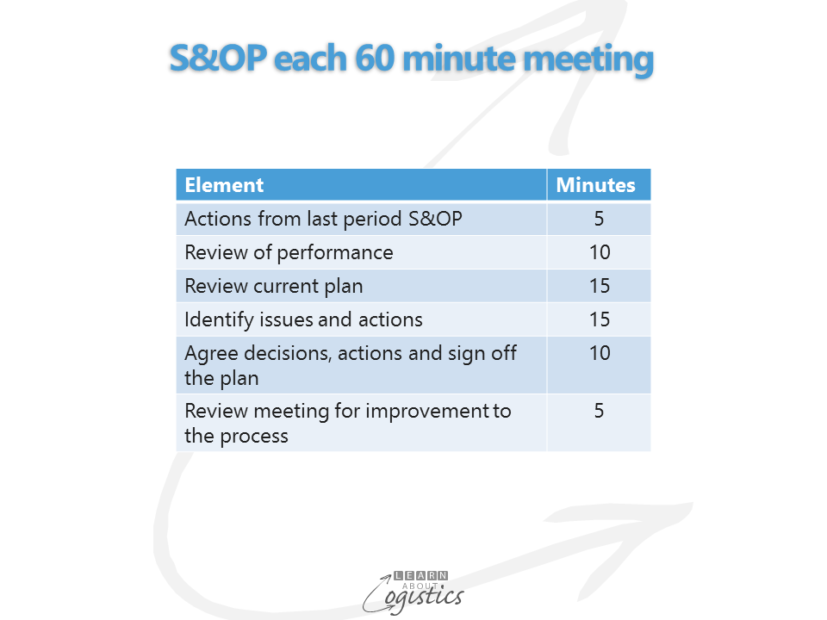S&OP as the hub of your business.
My previous post discussed Sales & Operations Planning (S&OP) becoming the ‘hub of your business’. After about six months, a successful implementation of the initial stage can result in the executive team working from one plan. That is an improvement over the more common situation, where the profit centre manager is lobbied by executives to push their own views.
To get from success for the initial stage to acceptance that S&OP is the ‘way we do business’ can take up to three years. The time allows for the education process for all affected staff, both current and replacement. Revised processes are implemented, new performance measurements (metrics) are developed, used and understood and IT applications are proposed, tested, purchased and implemented. It takes times to change the culture in an organisation.
But at its heart, S&OP is not difficult to follow – the challenge is to make it happen! S&OP is a structured planning process, based on a monthly cycle. The objective is to improve the balance between future demands for the market’s products and services, the organisation’s resources and the supply of materials and services. And, of course how the plan will be financed.
Implementing the S&OP process
The diagram shows a sequence of steps that is followed within each monthly period (planning should preferably be based on a four-week cycle of 13 periods per year). The process is supported by a S&OP policy document, authorised by the senior manager in the organisation.

The S&OP policy document provides an overview of the process and its objectives; the expected outcomes from each step through the four week cycle and the S&OP meeting dates, to avoid schedule conflicts. Responsibilities within the process are also identified. Because Logistics is cross-discipline, co-ordination of S&OP is a role for the Logistics Manager. The Master (senior) Planner is responsible for reconciling the completion of each step in the process.
In each month, there are five meetings. A feature of each is not to last longer than one hour, although it will take the first three meetings with a strong chairman for attendees to understand this rule. As shown in the diagram below, there are two parts for each meeting. The first is a review of recent performance (the past period review). This step identifies how the function or profit centre performed against the agreed S&OP, accepting the allowed variances from plan e.g. for each product family, allow a sales variance of +/- 5 percent from the forecast weighted range. The second part is the intended plans and actions to meet future customer requirements; these are set against the most likely internal capacity and capabilities. To be effective, the S&OP process requires factual input from all parts of the organisation, so accuracy and timeliness of data is very relevant.

The pre-Executive meeting is the opportunity for those who report to the executive team to resolve issues from each of the review meetings. This allows the plans, trade-offs and issues to be packaged for the S&OP Executive meeting
The executive team attends the S&OP Executive meeting, with no substitutes allowed, except when unavoidable, such as sickness; attendance must be a part of an executive’s performance measurement. If the profit centre manager is unable to chair the meeting, it is rescheduled. No substitutes are allowed, as it can become a habit and the implementation will fail through lack of commitment. At the S&OP Executive meeting, the executive team ‘signs-off’ the S&OP; therefore, the organisation as a whole will identify and approve how to rectify any notable variances against the plan. This reduces the ‘finger pointing’ and recriminations so prevalent in businesses that are planned in isolation.
Structuring S&OP
To ensure the process does not become focused on individual products (and drowned in data), S&OP operates through ‘families’.
- Families are based on the capacity and capabilities of resources within ‘operations’, because it is output which governs what a business can sell. In some circumstances, such as supplying automotive assemblers, families may reflect the few major customer’s brands or models
- The number of families varies between 5 and 15 (preferably a range of 6–12)
- Capabilities are expressed in a standard unit of measure that correlates with the constraint resource e.g. tonnes, shippers, litres, hours, pallets, loads. The plans are reviewed by product family, using the common unit of measure; this provides a consistent communication base across all functions
- Sales forecasts by product line or group are summarised by market segment/territory and business unit/division total. The product line or group forecasts are linked to the S&OP families
- Items for production are summarised within each S&OP family
- A simulation of operational capacity requirements should ideally be available to enable the impact of alternative plans to be modelled against constraints in the business
Within the One Plan approach to planning, the S&OP provides inputs to the Master Schedule; this is the driver for supplier, production and delivery plans and schedules. In an ideal supply chain, the schedules can be used by suppliers as input to their S&OP process and those suppliers will do the same for their suppliers and so on. If this could occur, uncertainty would be much reduced.
It is important to recognise that S&OP is not:
- The business plan: S&OP provides a structure for planning current and near-term situations; the Business Plan reflects future opportunities
- A budget review: budgets are financially driven, established for a 12-month period at a point in time. S&OP has a different timescale and its figures may well diverge from the budget, because S&OP is based on the latest inputs concerning demand and supply. S&OP should be an input to the budget updates.
- A monthly or weekly operations meeting: S&OP is a formal process of monthly near-term planning meetings focussed on the organisation. and requiring attendance by all interested parties. The process is driven on behalf of the most senior executive by the master planner. It brings together the executive team to sign off the future plan of the organisation
There is more to S&OP than this and the previous post provide, but they show that the process is not complicated. To be successful requires changes in attitudes about working in teams at all levels of management and therefore about how ‘success’ is measured. This is not a ‘quickie’ improvement but a long term project, which, I have experienced, can start to show benefits within six months.

